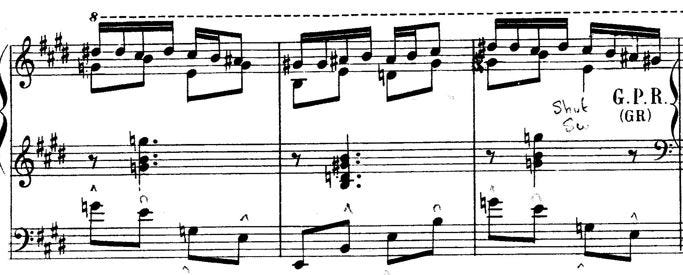Organ pedalboards - 30 or 32 notes? It makes a difference!
There have been many attempts over the years to develop standards for the design of organ consoles, notably by the American Guild of Organists. It would take many posts to go through all the elements of console design and each builder (and each organ consultant and organist) has their own house style. My current interest is in the design of the pedalboard, and specifically the number of notes.
Probably the majority of organs have a pedalboard of 30 notes that has an F as the pedal furthest to the right-hand edge of the pedalboard. This is especially helpful in finding the F that starts the pedal theme of the Toccata from Widor’s 5th Symphony. It plays a similar role in the pedal cadenzas in J.S.Bach’s Toccata in F. Normal practice (as noted by Peter Hurford in his book Making Music on the Organ p49) is to align the pedal D (and the organist’s body) to the manual D adjacent to Middle C on the manuals.
However many organs, especially digital instruments, offer a 32 note pedal keyboard which then aligns to the manual E. This makes life difficult because organists never look at their feet when playing; experience and pedal technique take over. I’m experiencing these difficulties first hand of a 32 note keyboard in playing the slow movement of the Trio Sonata No.1 by J.S.Bach. This involves a lot of crossing of the hands and arms. I usually practice on an organ with a 30-note pedal board. When playing on a 32-note board not only do my feet have to adjust spatially but because I am sitting slightly to the right (albeit by only a couple of inches) my hands also need to make a similar adjustment.
The history of the development of the pedalboard has its beginnings in around 1596 and is well told by David Yearsley in his book Bach’s Feet. The Organ Pedals in European Culture. The book runs to 300 pages which may give you a sense of the complexity of the development, with Britain in particular being slow to adopt pedals. He talks about how the range of notes gradually increased to 30 but says nothing about the reasons for the increase to 32. It seems that this development came from the USA and is certainly the compass set out in the AGO standard.
What defeats me is why the increase was needed. Although there may be others, the only piece of music I know that requires a top G pedalboard is the Cortêge et Litanie by Marcel Dupré. The bars concerned are shown above with just two G notes in three bars. What is strange about this piece of music is that Dupré wrote the piece in 1922 as the incidental music to a play. A few years later he was asked to prepare a version for organ when he was playing the Wanamaker organ in New York which did have a 32-note pedalboard. That is the version that was eventually published. However, Dupré could never have performed the piece on the organ at Saint-Sulpice (where he was the titular organist from 1934-1971) as that organ only as a 30 note F keyboard!



